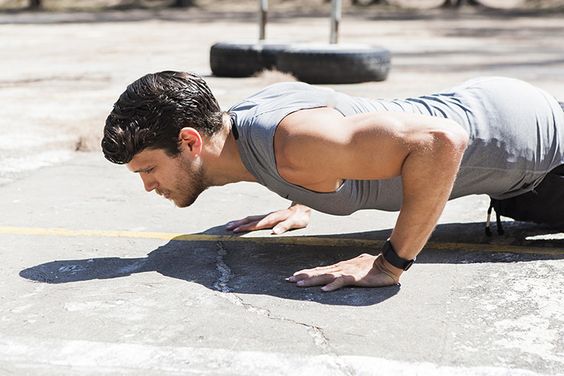Introduction
Bodyweight training is a highly effective and versatile approach to fitness that can be done anytime, anywhere, without the need for expensive equipment or gym memberships. Whether you're a beginner or a seasoned athlete, incorporating bodyweight exercises into your routine can help you build strength, increase flexibility, improve cardiovascular health, and achieve your fitness goals.

One of the primary advantages of bodyweight training is its accessibility. Regardless of your location or budget, you can engage in a challenging workout using just your own body weight as resistance. From classic exercises like push-ups and squats to more advanced movements like burpees and planks, the possibilities for bodyweight training are endless, making it suitable for individuals of all fitness levels and experience.
Benefits of Bodyweight Exercises
Beyond its convenience and affordability, bodyweight training offers a wide range of benefits for your overall health and well-being. Unlike exercises that isolate specific muscle groups, bodyweight exercises typically engage multiple muscle groups simultaneously, providing a comprehensive full-body workout. This type of training helps improve muscular strength, endurance, and coordination, leading to enhanced functional fitness and making everyday activities easier to perform.
Moreover, bodyweight exercises are highly adaptable and can be modified to suit different fitness levels. Beginners can start with simpler variations and gradually increase the intensity or difficulty as they progress. Conversely, more advanced individuals can challenge themselves by incorporating variations, increasing repetitions, or adjusting the tempo of their movements.
Effective Bodyweight Exercises
Here are some effective bodyweight exercises that target major muscle groups:
Upper Body:
- Push-ups: A classic exercise that works the chest, shoulders, and triceps.
- Incline Push-ups: An excellent modification for beginners to build upper body strength.
- Decline Push-ups: A more challenging variation that targets the upper chest and shoulders.
- Triceps Dips: Effective for strengthening the triceps and shoulders.
Lower Body:
- Squats: A fundamental exercise that targets the quads, glutes, and hamstrings.
- Lunges: Great for strengthening the legs and improving balance.
- Calf Raises: Targets the calf muscles, improving ankle stability and power.
- Glute Bridges: Strengthens the glutes and hamstrings.
Core:
- Plank: An isometric exercise that strengthens the core, shoulders, and back.
- Side Plank: Targets the obliques and improves core stability.
- Crunches: A classic exercise for strengthening the abdominal muscles.
- Leg Raises: Effective for targeting the lower abs and hip flexors.
Full Body:
- Burpees: A high-intensity exercise that combines squats, push-ups, and jumps.
- Jumping Jacks: A cardiovascular exercise that also engages multiple muscle groups.
- Mountain Climbers: A dynamic exercise that targets the core, shoulders, and legs.
Creating a Bodyweight Workout Routine
When creating a bodyweight workout routine, it's essential to consider your fitness level, goals, and available time. A typical workout routine can include exercises targeting different muscle groups, ensuring a balanced workout.
Warm-up: Begin with 5-10 minutes of light cardio, such as jumping jacks or high knees, followed by dynamic stretches like arm circles and leg swings.
Workout: Choose 2-3 exercises per muscle group and perform 2-4 sets of 8-12 repetitions for each exercise. Rest for 30-60 seconds between sets.
Cool-down: Finish with 5-10 minutes of static stretches, holding each stretch for 20-30 seconds.
Conclusion
Bodyweight exercises offer a convenient, effective, and versatile way to achieve your fitness goals without the need for equipment. By incorporating a variety of bodyweight exercises into your routine, you can build strength, increase flexibility, improve cardiovascular health, and enhance your overall well-being. Remember to start slowly, listen to your body, and gradually increase the intensity or difficulty of your workouts as you progress.

.jpg)